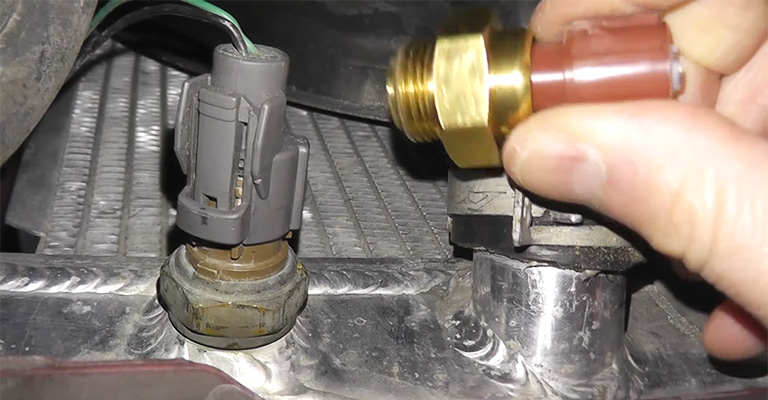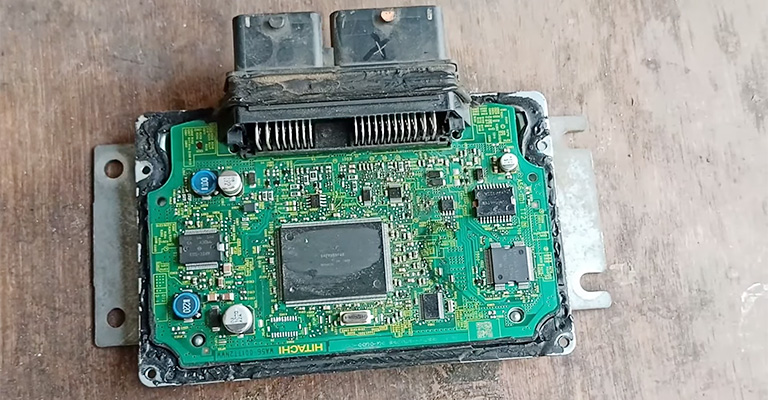Is your Honda Pilot showing DTC P0175? Then it’s a clear indication that your vehicle engine is running rich on fuel.
When the air ratio in the air-fuel mixture gets too low or the fuel ratio increases, that triggers the P0175 code.
There are a bunch of causes behind the imbalance in the air-fuel mixture. And the fix depends on the causes. Whatever it is, if you want a solution to this issue, don’t forget to go through this guide about P0175 Honda Pilot causes diagnosis and fix.
It’s going to help you solve the problem for sure!

What Does Code P0175 Indicate in Honda Pilot?
Code P0175 indicates that the Oxygen sensor in engine bank 2 has detected an abnormality in the AFM (Air and Fuel mixture).
When the amount of oxygen extremely decreases or there is too much fuel in the air and fuel mixture, that leads to the engine running rich and triggers DTC P0175.
Additionally, when the sensor detects a lack of air or fuel, it sends a signal to the ECM (Engine Control Module). But after detecting the air and fuel ratio imbalance, the ECM doesn’t notify you immediately.
Upon detecting the shortage, it tries to compensate for the required amount of oxygen or fuel to get the ideal air and fuel ratio back; if that’s not possible, you get notified with P0175.
The ideal air and fuel ratio is 14.7:1, indicating 1 part of the fuel for 14.7 parts of air or oxygen; combustion engines work efficiently when this ratio is maintained.
However, some similar codes to P0175 are P0171 and P0172. DTC P0171 is shown when the air is too much in the mixture.
And DTC P0172 is shown when the amount of fuel is very high. Now, what causes the amount of oxygen to decrease? Check out the next section.
What Are the Causes of the Engine Running Rich or P0175?
There are several factors that might lead to an engine running rich. Below, we’ve listed the most common ones. Take a look−
Bad Oxygen Sensors

Oxygen sensors are a crucial part of the engine’s fuel delivery system. What it does is, notify the engine computer when there is a lack of oxygen or fuel in the mixture.
Therefore, the engine computer adds whatever is needed to reach the required AFR (air-fuel ratio).
But when the sensor goes bad, it can send false signals, and the engine computer will keep on adding fuel or air.
Thus, if the sensor sends a signal that more fuel is needed even when there is an adequate amount of fuel in the mixture, that’ll increase the fuel ratio greatly, leading to a lack of air. And that’ll trigger P0175.
Fault in Fuel Injector

A fuel injector is responsible for transferring pressurized fuel into the intake manifold at the right moment. The engine intake valves aren’t always open; these valves keep on opening and closing.
Therefore, the fuel injector needs to spray the right amount of fuel when the valves are open.
If there is a fault in the fuel injector, it might not send the needed amount of fuel in the valve or deliver more than the needed amount of fuel into the intake manifold; hence the fuel ratio will increase, resulting in P0175.
Mass Airflow Sensor Malfunction
The mass airflow sensor in the engine keeps a tab on how much air or oxygen is being sent to the catalytic converter and to the intake manifold for combustion.
And this sensor sends a signal if there is a need for more air in the air-fuel mixture.
Therefore, anything wrong with this sensor can send false signals, which can lead to a very low or very high air ratio in the mixture.
Fault in Engine Coolant Temperature Sensor

When the engine temperature increases, the engine coolant temperature sensor sends the signal to the ECU (engine control unit), and the ECU releases oil to cool down the engine.
And, when there is something wrong with this temperature sensor, it can send wrong signals, and the ECU will keep on releasing fuel, thinking the engine temperature is high, which will lead to an increase in the fuel ratio in the air-fuel mixture.
Bad Fuel Pressure Regulator
As the name suggests, it regulates the fuel pressure, and anything wrong with this regulator can result in very low or high oil pressure. Thus, that can lead to DTC P0175.
Faulty ECU

The ECU (Engine Control Unit) is what collects data from other sensors and then regulates the air-fuel mixture accordingly.
But if that goes bad, there is a high chance that the ECU will misinterpret the data and will cause an imbalance in the air-fuel mixture.
Other Factors that Can Cause the Engine to Run Rich
● Leaked Vacuum
● Fault in Thermostat
● Bad fuel pump
● Leak in the exhaust system
What Are the Symptoms of P0175 or Engine Running Rich in Honda Pilot?
When the engine is running rich, it’ll show various symptoms; here are some of the most common symptoms of P0175.
Engine Check Light on
You’ll find the engine check light ON whenever there is anything wrong with the engine. The same happens when there is an imbalance of the air-fuel mixture; the ECU illuminates the check light.
Low Engine Performance
When there is an imbalance in the air-fuel ratio, you’ll notice the engine efficiency has reduced. You won’t get the acceleration response you used to get before.
Or you might see the engine is frequently stalling. Among many reasons, an imbalance in the air-fuel ratio is one behind poor engine performance.
Strong Smell of Gasoline
When the engine runs rich in fuel, you’ll get a strong gasoline smell inside the vehicle. This indicates that unburnt fuel is passing into the crankcase via rings.
Or, there is a leak in the exhaust.
Poor Fuel Economy
One of the very common symptoms of the engine running high on fuel is the engine fuel consumption will increase. If you used to get 20 miles per gallon, you’d get 15 when there is an imbalance of air-fuel ratio.
Check the odometer rating to find out any difference in the fuel economy. In some cases, the engine even gets stalled too.
Exhaust Releasing Black Smoke
When the fuel ratio increases in the air-fuel mixture, the engine uses more fuel than average.
Therefore, due to excess fuel, some reach the exhaust system, leading to black smoke from the exhaust pipe. In the worst case, you might even find fuel dropping from the exhaust as well.
How to Solve DTC P0175 in a Honda Pilot?
Well, the solution depends on the factor causing this issue. For example, if the oxygen, mass air flow, or engine coolant temperature sensor has gone wrong, you’ll have to replace them with a new one.
Similarly, if the problem is in the fuel injector, depending on the condition, you’ll either have to repair it or replace it.
Leaks in the vacuum hoses and lines can also lead to P0175; therefore, check all these lines and hoses thoroughly.
Check the exhaust as well; the leaked exhaust is also a reason.
Frequently Asked Questions
It depends on the engine’s condition. When the engine is running on an unbalanced air-fuel ratio for a long time, that can result in engine stalling and many more issues. Therefore, you wouldn’t want to drive your vehicle in that condition.
You’re looking at anywhere between $100 – $400 on average. However, it depends on what state you’re living in, how experienced the mechanic is, etc.
The most common reasons are fuel leaking, engine misfiring, poor engine performance, fuel pump making noise, etc.
Conclusion
If you don’t have experience in diagnosing engine issues, then it’s best to have an expert mechanic check your vehicle. Finding out the reason behind P0175 is a daunting task since dozens of factors can lead to this code.
Well, that’s all about the P0175 Honda Pilot causes diagnosis and fixing the issue. Hope this guide helps you detect the real culprit behind your engine running rich.

Leave a Reply